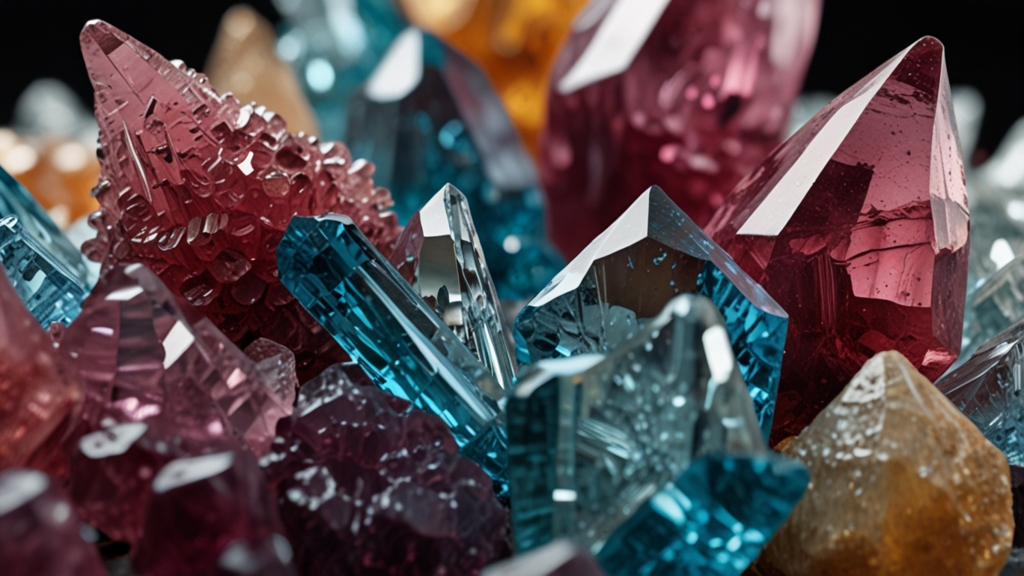Crystal Clear: The Fascinating Chemistry of Crystals and Gems
From the timeless allure of diamonds to the mesmerizing shimmer of sapphires, crystals and gems have played an important role in human history. Their beauty is captivating, but beneath their enchanting surfaces lies a world of fascinating chemistry. Understanding the intricate structures and formation processes of these precious stones not only deepens our appreciation but also unveils the mysteries of nature's creations.
The Building Blocks: Atomic Arrangement
At the core of every crystal and gem is a precise arrangement of atoms. This ordered structure, known as a crystal lattice, is what gives crystals their unique physical properties and geometric shapes. For example, diamonds and graphite are both made of carbon atoms. However, the carbon atoms in diamonds are bonded in a tetrahedral structure, making diamonds extremely hard, while those in graphite are arranged in sheets, rendering graphite soft and slippery.
Formation of Gems: Nature’s Alchemy
The formation of crystals and gems involves a series of geological processes that span millions of years. Most gems are formed through a combination of high temperature, pressure, and the presence of specific chemical elements. For instance, the deep red color of rubies is due to the presence of chromium, while the green hue of emeralds comes from trace amounts of chromium and vanadium.
Natural gems typically form in environments such as deep within the Earth's mantle, in volcanic regions, or in sedimentary rock layers. The conditions in these environments dictate the types of minerals that will crystallize and their potential for gemstone quality.
Synthetic Gems: Man-made Marvels
Advances in technology have enabled the creation of synthetic gems, which are chemically identical to natural gems but are created in laboratories. The synthesis of gems like cubic zirconia and lab-grown diamonds involves techniques like the Czochralski process or High Pressure High Temperature (HPHT) methods. These processes mimic the natural conditions under which gemstones form, allowing for the production of high-quality stones that are nearly indistinguishable from their natural counterparts.
"The ability to create synthetic gems not only makes these treasures more accessible but also reduces the environmental impact associated with traditional mining methods." - Dr. Elena Rutherford, Geoscientist
The Science of Color
The vibrant colors of gems are a result of complex chemical interactions and impurities within the crystal lattice. For instance, the presence of iron and titanium in corundum results in blue sapphires, while trace amounts of chromium result in red rubies. This phenomenon is known as crystal field theory and helps scientists predict and understand the colors in various gemstones.
"Every gem's color tells a story of its journey through time, the conditions it has endured, and the unique elements it has encountered." - Gemologist Sarah Bennett
Applications Beyond Beauty
While crystals and gems are celebrated for their aesthetic appeal, they also have significant industrial applications. Quartz crystals, for instance, are used in watches and electronic devices due to their piezoelectric properties. Diamonds are renowned not just for their beauty, but also for their unparalleled hardness, making them invaluable in cutting, grinding, and drilling technologies.
The study of crystals extends into fields like pharmacology, where the crystallization of compounds can impact the effectiveness of drugs. Understanding the chemistry of crystals is crucial for innovations in various scientific and technological domains.
Conclusion
The chemistry of crystals and gems reveals a delicate balance of nature's artistry and scientific principles. From their meticulous atomic arrangements to the complex processes of their formation, these treasures of the Earth are more than just stunning visuals. They are a testament to the intricate and wondrous ways in which our world operates. Whether natural or synthetic, the study of crystals and gems continues to captivate scientists and enthusiasts alike, offering insights into the very fabric of the material world.












